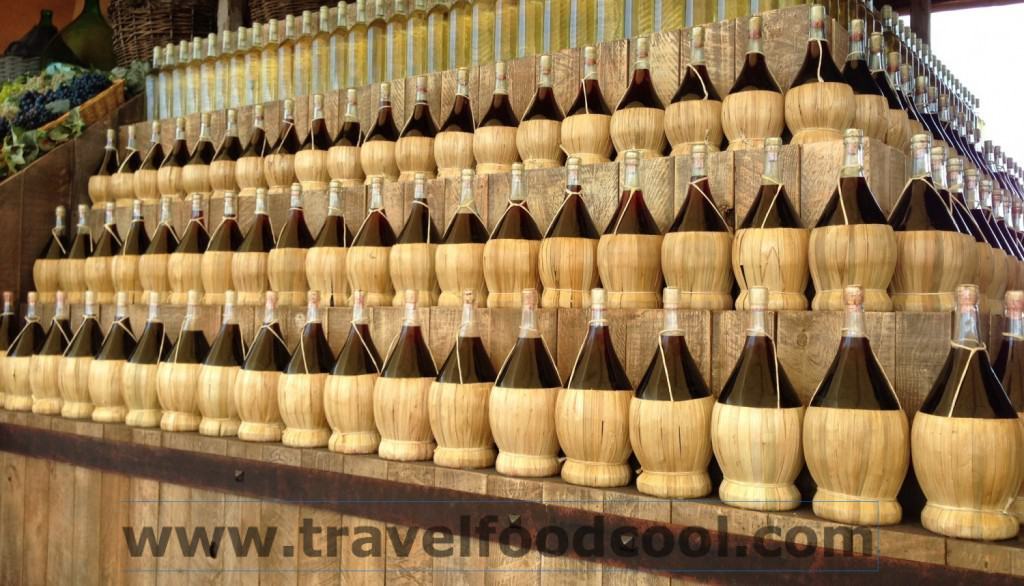
The other day while I was walking Miss Corona, I passed by a local Italian pizza restaurant. The place was decorated like a 1950s Italian restaurant. Each table was topped with a red and white checkered tablecloth and a straw-bottomed wine bottle with a candle in it. Very old school and very “Lady and the Tramp“!
The straw-bottomed wine bottle, which I remember seeing mostly in movies, has a special name: it is called a “fiasco“. If you have more than one, they are fiaschi (fee-as-key).
So why is the bottle called a fiasco and why are they straw-bottomed? (These are the questions I asked myself while I was walking the dog.)
The name fiasco isn’t as exotic as I was expecting. The word “fiasco” comes from the Latin flasco meaning bottle or container. As the bottles were blown by hand, their bottoms were rounded. The round-bottomed bottle was much easier to make than a flat–bottomed bottle. The straw baskets, which were woven by hand from sala (dried swamp weed), kept the bottles upright and protected them during handling and shipping.
Boccaccio in the 1350’s made the first written mention of a fiasco as a receptacle for red wine in The Decameron and administrative documents from the time listed the profession of the fiascaio (fiasco-makers). In the 14th century, the fiasco bottle first appeared in a painting by Tomaso Barisini (who was usually referred to as Tommaso da Modena). Tommasco da Modena also has another first in 1352, he was the first painter to depict eyeglasses in a painting. But I digress.
In 1574, the official measure of the fiasco was mezzo quarto (2.28L). Before this, the sizes ranged from a quarto (5.7L) to a metadella (1.4L). Certification of the capacity was noted by a lead seal on the straw baskets. Counterfeiters, however, quickly learned that it was pretty easy to put a new slightly smaller bottle into an approved, sealed basket, and thereby cheat the system. In 1618, the seal was moved to the top of the bottle.
The early 20th century found the manufacturers of fiaschi employing about 1,000 glass blowers and 30,000 basket weavers. A manufacturer’s association (Comissionaria Industria Fiaschi) was established in 1933 at Empoli, in Tuscany.Unfortunately, around the early 1950s, the manufacture of the bottles and baskets became mostly automated.
The fiasco bottles eventually fell out of favour (probably due to the expense in making them!) and were replaced by the more traditional Chianti bottle that we see today (which is a Bordeaux bottle). In Italy, you can still find some wines in the fiasco bottle (mostly in the Chianti region), and stores sell mini fiasco bottle as souvenirs (ELIN’s TIP: the mini bottles make great tree ornaments).
I would be remiss if I didn’t mention that fiasco also means “a thing that is a complete failure, especially in a ludicrous or humiliating way”. The term is actually Italian (and French) theatre slang. According to an Italian dictionary, “fare il fiasco” used to mean “to play a game so that the one that loses will pay the fiasco,” in other words, he will buy the next bottle (of wine). If the dates are not objectionable, that plausibly connects the literal sense of the word with the notion of “a costly mistake”.





















